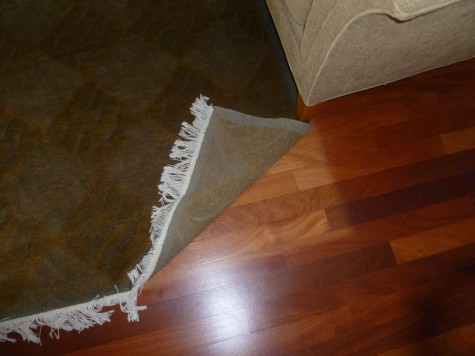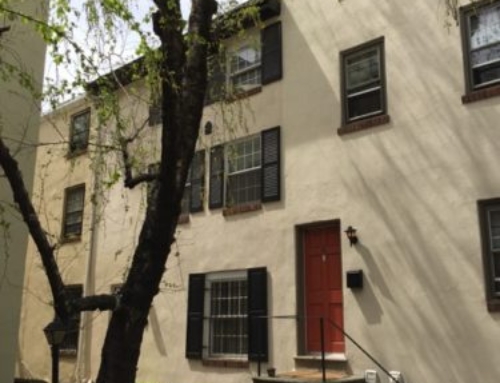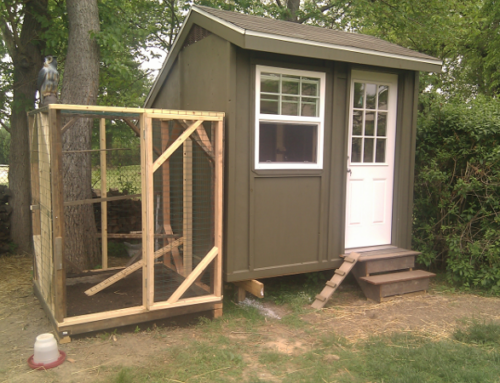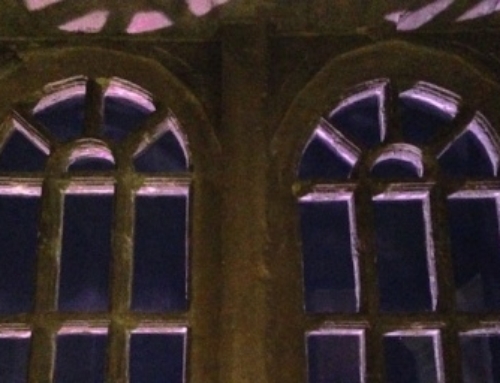Out of a Box Flooring

Most home owners are familiar with the various advertisements for what we call “Out of a Box Hardwood Flooring.” These are pre finished flooring products that come in a cardboard box. You can typically find these at your local Big Box outlet as well as at flooring showrooms. There are many types of hardwood flooring that come in a box, and some you should avoid.
Typically these products are selected because the buyers see they are less expensive than site finished locally sourced hardwood flooring. But use caution when you consider using these products in your own home.
Hardwood flooring that comes in a box will have been dried and finished somewhere else, maybe even in a far away tropical country. This means it’s not going to have the same humidity content as your home. This can lead to warping or shrinking once it’s installed.
You can see in the photo that this out of the box flooring has a fugitive color, probably damaged by UV light coming into the home through the windows. Now these home owners can’t move rugs or furniture without showing large bleached areas of flooring.
Many of the exotic species of boxed flooring we have seen crack, swell, and react very dramatically. We have even seen pre finished oak flooring from one of the best recognized flooring manufacturers twist dramatically once freed from its box. This product flaw left a high percentage of pieces un-useable. There were in addition to this problem too many tiny pieces that can make a floor look cheap.
The finishes used at factories now are often “green” which means they use dye or finishes suspended in a water medium. We all know that water swells wood. The individual boards are sanded between coats and come with a perfectly flat machined finish. This process leaves a very soft wood layer under the finish. If you can dent it with your fingernail, imagine what a high heal or dog’s toenails will do to the flooring. I typically test pre finished flooring by hitting it with a ball pean hammer to see if it dents and how much.
Out of a Box Flooring can come with advantages;
- Price. Many of these products are half the price of select site finished locally sourced hardwood floors. But beware because you do get what you pay for.
- Ease of installation and time savings over site finished products. Again beware as each product has its strengths and limitations.
- Engineered flooring is made of layers of wood just like plywood is made, with a finish layer of hardwood on top. Check to see how thick that layer is, so it might be refinished in the future. These products can be great in rooms with some (not lots) moisture issues, like basements. Always have your flooring pro do a moisture test before installing.
- Laminate flooring is also either a plywood or Masonite type of substrate with a fake wood printed layer on top. Avoid it if you can. One of our tile showrooms has some in their reception area to show what a poor product it is. You can see through the printing!
- Time savings. It takes less time to install one of these floors than a site finished locally sourced product.
At best these products should be seen as temporary flooring. They won’t last 35 or more years. Typically their dimensions and species do not suit the older home. So when people look at them they KNOW these are a cheaper out of a box product.
We work in older and very old homes. We OFTEN see floors 50 of 100 years old. These great original floors have character and quality. In our area the species typically used are;
- Red or White Oak, either tongue and groove, top nailed
- “Pumpkin Pine” which is old growth tongue and groove heart wood in beautiful orange brown
- Fir, a softer red colored conifer, and sometimes
- American Cherry (not to be confused with the stuff from South America), or
- Eastern Chestnut which I have mostly seen in hand cut parquet patterns.




